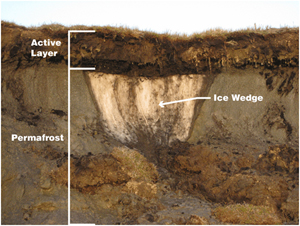What is Permafrost? What is Permafrost made of? How does climate change affect permafrost?
Sakshi Education
By Srirangam Sriram, Sriram's IAS, New Delhi.

How Does Climate Change Affect Permafrost?

Permafrost is any ground that remains completely frozen—32°F (0°C) or colder—for at least two years straight. These permanently frozen grounds are most common in regions with high mountains and in Earth’s higher latitudes—near the North and South Poles.
What Is Permafrost Made Of?
What Is Permafrost Made Of?
- Permafrost is made of a combination of soil, rocks and sand that are held together by ice. The soil and ice in permafrost stay frozen all year long.
- Near the surface, permafrost soils also contain large quantities of organic carbon—a material leftover from dead plants that couldn’t decompose, or rot away, due to the cold. Lower permafrost layers contain soils made mostly of minerals.
- A layer of soil on top of permafrost does not stay frozen all year. This layer, called the active layer, thaws during the warm summer months and freezes again in the fall.
How Does Climate Change Affect Permafrost?
- As ice inside the permafrost melts, it will leave behind water and soil.
- Many northern villages are built on permafrost. When permafrost is frozen, it’s harder than concrete. However, thawing permafrost can destroy houses, roads and other infrastructure.
- As permafrost thaws, microbes begin the decomposition of humus material. This process releases greenhouse gases like carbon dioxide and methane to the atmosphere.
- When permafrost thaws, so do ancient bacteria and viruses in the ice and soil. These newly-unfrozen microbes could make humans and animals very sick.

Published date : 10 Nov 2020 11:51AM






